We welcome your feedback and input into this newsletter. In particular, let us know if you would like to know more about a particular topic or if you encounter issues out in the field that need clarification.
You can do this by sending an email to dcvsurvey@amsa.gov.au If you would like to be removed from the Survey Matters mailing list, let us know by sending an email to dcvsurvey@amsa.gov.au
Since the last edition
We have updated the way we manage enquiries received through the dcvsurvey@amsa.gov.au and dcvapplications@amsa.gov.au inboxes.
This change is designed to provide us with greater traceability of the type of enquiries we receive and also provide you with a more detailed automatic reply email.
The automatic reply will now include a title, ID number and where applicable, also reference the vessel name and UVI.
This change does not affect where you direct your emails. Technical enquiries are still sent to dcvsurvey@amsa.gov.au while application related enquiries (including emailed survey reports) are still sent to dcvapplications@amsa.gov.au
In this edition
- The role of an AMSA accredited surveyor
- Get on My Boat
- The details on (NSCV) level flotation
- Use of previous state accepted arrangements or approaches
- Recommending with conditions
- Documenting non-conformances
- AMSA’s approach to modular barges
The role of an AMSA accredited surveyor
It has come to the attention of AMSA that an Accredited Marine Surveyor may have made representation to a foreign vessel operator that the surveyor was accredited by AMSA to assist in preparing vessels for port State control (PSC) inspections. AMSA only accredits marine surveyors to carry out surveys of Australian Domestic Commercial Vessels (DCVs) under the National Law.
While AMSA accepts that some Accredited Marine Surveyors have the appropriate training, qualifications and experience to assist the operator of a vessel with preparing for a PSC or flag State control (FSC) inspection, it is misleading for a surveyor to make representations that they are accredited by AMSA to do so. Similarly, it is misleading for a surveyor to allow a vessel operator to assume that the surveyor’s AMSA accreditation was with respect to the survey or inspection of RAVs or foreign vessels. This type of misleading practice is inappropriate and future instances will be referred to the Australian Competition and Consumer Commission (ACCC) and surveyor professional associations for investigation. In addition, towards the end of last year we received two incident reports of verbal abuse being directed at AMSA staff by an accredited surveyor.
This type of behaviour is unacceptable and AMSA takes these reports seriously. Welcome to the latest edition of Survey Matters e-Newsletter. Survey Matters brings you the latest news and information for accredited surveyors in Australia.
Get on My Boat
If you need a simple guide to standards for new vessels, visit the My Boat app and find out how to prepare for survey.
My Boat includes standards tools such as the safety equipment list generator, navigation lights generator, propeller shaft calculator, F2 leisure craft, EX40 and EX02 non survey vessel requirements.
The details on (NSCV) level flotation
In 2016, AMSA ran an article entitled “Get the basics on flotation” in our Working Boats publication.
The article also included this helpful illustration which helps depict the difference level flotation can make if you get into trouble.
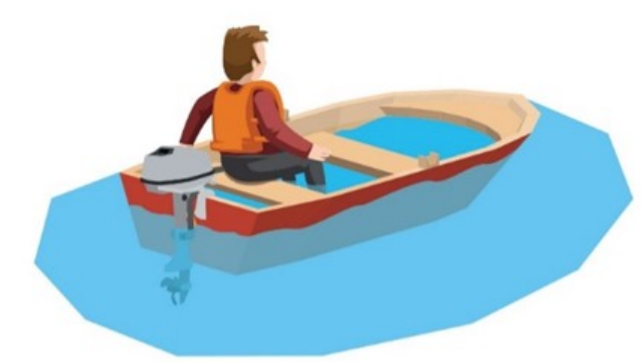
Level flotation means that the boat will continue to float in a level position if swamped and will be prevented from capsizing in calm water.
This will allow you to remain in the boat and bail the vessel to remove the water.
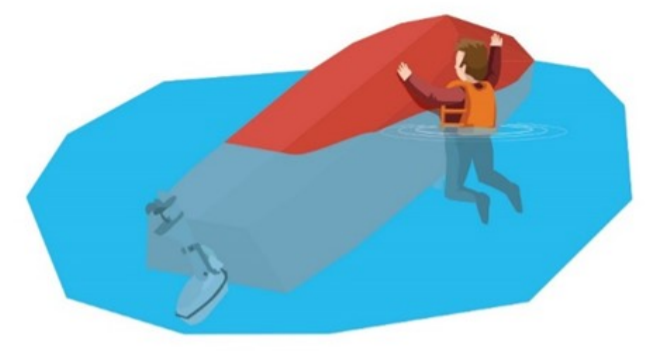
Basic flotation means that the boat will float in some form if swamped. If the boat has capsized it will remain afloat for you to possibly cling to the upturned hull.
From a survey perspective, there is more we need to know about level flotation, because when it comes to meeting the criteria, it’s the details that matter. In particular, this article will explore maximum heel angle criteria– the details of which are specified in tables 33 to 35 of NSCV C6B:
- symmetrical—fully laden condition (table 33);
- unsymmetrical—partially laden condition (table 34);
- Symmetrical—light condition (table 35).
In this criteria there is a requirement that the vessel not heel more than 10 degrees from the upright.
Geometrically, for this criteria to be safely met, it follows that flotation in the sides of the vessel should come into contact with the flooded waterline, before the 10 degrees heel criteria is failed.
As a starting point, the placement of foam required to ensure that it does come into contact with the flooded waterline can be calculated geometrically as a function of vessel breadth as follows:

This means that for a typical 2.4m wide runabout, foam should be placed less than 219mm above the design waterline (if we assume no righting moment is provided by deck buoyancy, for example on an open boat).
If foam is placed higher than this, there is a risk that criteria will not be met, as the vessel may heel beyond the 10 degree criteria, before the buoyancy comes into contact with water.
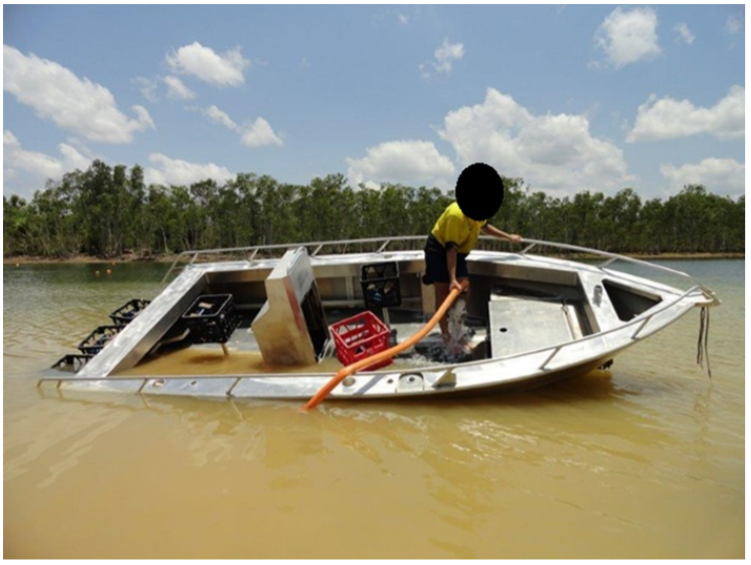
Note: In the case of a decked vessel, righting moment is provided by the enclosed under deck area and so foam can be placed higher. However, consideration should still be given to this geometric positioning and side foam should commence as low as possible.
The decked vessel case
In a decked vessel, any water mass that has a head above the waterline can be considered as added mass with a free surface.
It is possible to draw some inferences about the effect this mass of water may have, by estimating the volume of this water. Consider the vessel shown in the image below in figure 1.
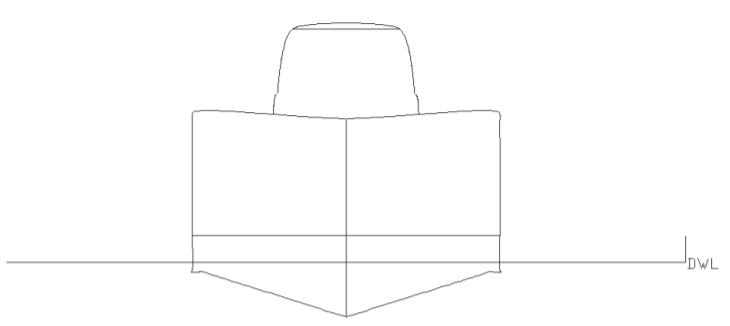
Figure 1 - monohull section
If the water contained in the above the deck area is 420mm deep then the flooded area is approximately equal to the total buoyant area below the deck and it could be considered a significant volume of water.
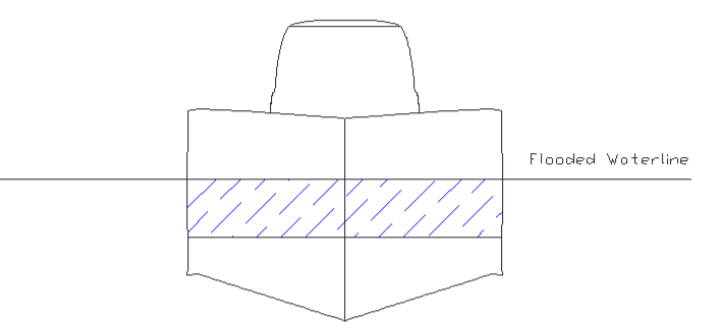
Figure 2 - water in well equal to buoyant area below deck
As the water mass is located above the centre of buoyancy in this loading condition, there may not be sufficient righting moment to counter any upset to transverse centre of gravity (TCG), including waves, wind or even the buoyancy force of the below deck area. As a result, even small upsets to TCG, causing the water mass to shift to one side of the vessel, may result in dangerous list or capsize. You will also note that at this point, any foam flotation materials fitted high up under the gunwales will do nothing to increase the height of the centre of buoyancy and stability of the vessel, as the foam will not yet come into contact with the waterline, see Figure 3.
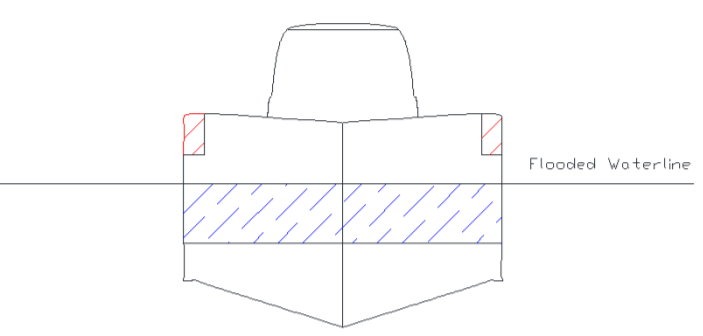
Figure 3 - side foam positioned too high to have effect at equilibrium
For this foam to come into effect, the vessel needs to list significantly to one side. Failing the NSCV C6B criteria specified in tables 33 to 35. A foam installation giving consideration to these factors will start lower in the vessel and continue up the sides of the vessel (continuing up to account for the additional effect of deadweight loading).

Figure 4 - side foam positioned lower in the vessel
In summary, relying on Annex D of NSCV C6B for the placement of foam buoyancy, without taking into consideration the arrangement of the vessel, does not guarantee that a vessel will meet the technical criteria of NSCV C6B 8.7.4. Consideration should be given to the arrangement of the vessel including decks. Geometric properties of the vessel should also be considered when assessing or specifying flotation positioning.
Use of previous state accepted arrangements or approaches
We are 18 months into AMSA providing service delivery and as all involved parties are becoming better versed in the use of MARS, the Surveyor Accreditation Guidance Manual (SAGM), and AMSA procedures and processes, it is a timely reminder to review the previous approach or arrangements that were in effect under state marine safety agencies.
Under the state model, individual agencies were able to approve Local Equivalent Solutions (LES), which other jurisdictions may not have agreed to or implemented.
Additionally, the local authorities had the ability to make policies regarding interpretations or arrangements for the application of the standards.
As a general rule these existing LES, policies, arrangements etc. are not applicable to new vessels or to vessels which have triggered transitional status, as they are not valid under the current Marine Order 503, nor were they previously nationally accepted. Here are three examples that AMSA has come across during assessments for a certificate of survey:
- Ferries in chains, or similar, being surveyed without lifesaving appliances required under NSCV C7A
- ‘B’ area vessels with no berthed accommodation
- ‘Well decked’ vessels fitted with level flotation utilising ‘Collared vessel’ criteria for intact stability (pictured below).
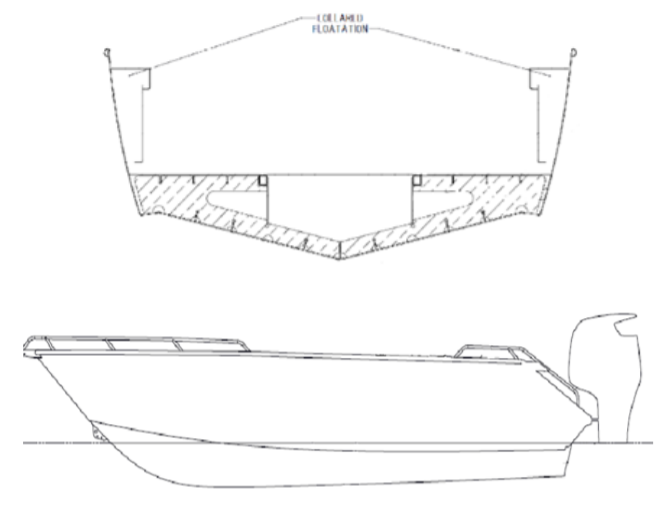
Although the application of these arrangements have been historically accepted, in some cases for many years (such as the interpretation that foam filled bulwarks on a well deck vessel meet the definition of ‘buoyant collars’ in C6A) they no longer have application under the National Law. If you are seeking a solution that differs from the standard, apply for an equivalent solution or specific exemption.
Recommending with conditions
Conditions recommended by accredited marine surveyors appear on the face of a certificate if they are considered suitable by the approving delegate at AMSA. Conditions are generally added to a certificate of survey after initial survey in order to ensure the vessel complies with the standards. It is rare that conditions are added to a Certificate of Survey as a result of a periodic or renewal survey unless the periodic surveyor considers something has been missed during the initial survey process.
Historically some state or territory agencies would write conditions on a certificate of survey that covered outstanding areas of initial or periodic survey that still needed to be addressed e.g. Compass must be swung within 3 months of the issue date of this certificate. This practice was acceptable when certificate durations were only for one year and/or the survey and compliance duties were covered by the same agency.
Under service delivered by AMSA, which incorporates accredited surveyors and compliance partners on a national scale, this approach is not correct and may conflict with National Law provisions including Marine Order 503. Under Marine Order 503 Section 11 (1) (b) it is a condition of a certificate of survey that any defect identified in any survey, including a periodic survey, must be rectified. In addition, under MO503 Section 9 (2) (a), one of the criterion for the issue of a certificate of survey is that the national regulator is satisfied that the vessel meets the standards mentioned in Marine Order 503.
To indicate that a defect be rectified as a condition listed on a certificate would be counter-intuitive to these requirements.
Examples of improper recommendations with conditions:
- Shaft to be fully drawn and inspected at the next slipping.
- Marine Order 503 Section 5 (1) requires that vessels undergo initial, periodic and renewal surveys in accordance with SAGM. SAGM 4.11 specifies the scope and frequency of periodic and renewal surveys and includes the requirements for propeller shaft inspections. Formal approval is required from AMSA to extend an inspection date and this may involve shortening the duration of a certificate.
- Liferafts for 100% complement to be carried on-board when operating in C waters.
- Under NSCV Part B Clause 2.6 a vessel must fully comply with all service categories for which it has a Certificate of Survey regardless of whether it is predominantly used in a lower service category. The accredited surveyor must verify that all safety equipment required for the service categories listed on the vessel’s certificate is on board and stowed correctly in accordance with the standards.
- Stability book to be revised by the time of next survey. Passengers to be reduced from 80 to 50 while stability is revised
- If the lightship displacement is outside the allowable margins, the transitional arrangements outlined in MO503 must be followed. Under MO503 Section 11 (h) the vessel must not be operated until a new certificate of survey has been issued or formal approval of temporary arrangements is granted by AMSA.
Examples of proper recommendations with conditions:
- Access to the foredeck prohibited whilst the vessel is underway.
- Related to bridge visibility and COLREGs requirements under NSCV C1
- Vessel must not be underway during the gazetted hours of sunset and sunrise or during times of limited visibility.
- Related to COLREGs requirements under NSCV C1
- The total number of persons on the flybridge must be limited to 8.
- Related to stability and/or arrangement requirements under NSCV C6A and NSCV C1 respectively.
- Seating must be provided for all passengers on voyages exceeding 60 minutes duration.
- Related to arrangement requirements under NSCV C1
- Lifejackets must be worn by crew when located on the aft deck (special working deck)
- Related to guardrail and bulwark requirements under NSCV C1
Documenting non-conformances
In response to the article published in the last edition Reporting deficiencies ‘as soon as practicable’, we were asked to expand further on the term ‘nonconformance,’ to assist a surveyor in utilising the AMSA586 form correctly.
The AMSA586 may be used by an accredited surveyor or recognised organisation to record non-conformances and corrective actions on a DCV, the form also enables the surveyor to communicate these matters to both the National Regulator and the vessel owner.
To try and define ‘non-conformance’ for the purpose of a survey is difficult. However, it’s basically a lack of conformity to the specified law or standard that the vessel is required to satisfy.
A surveyor’s role is to detail and document non-conformances using the AMSA586 so it’s unambiguous, defensible, clear and concise to all involved parties. A brief description of each non-conformance and the standard to which the non-conformance relates must be articulated on the form.
Below is an example of real life non-conformances and the related standards that have been submitted to MARS as part of a periodic survey process. As you will see, it’s clear and concise and allows all parties to understand what needs to occur.
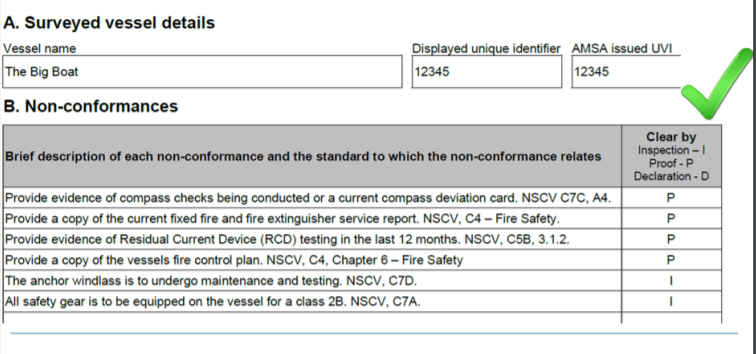
AMSA’s approach to modular barges
We have received a number of enquiries about how AMSA deals with the survey and load line requirements for modular barges. Our approach to these vessels is outlined below: A single certificate of survey will be issued listing all modules on the certificate.
Measured length is taken as the measured length of the longest proposed configuration.
- The UVI listed on the CoS must be displayed on each module
- A copy of the certificate of survey must be carried on board each configuration or on-site.
- Separate UVI’s are not be required for each configuration provided the arrangement is listed on the certificate of survey.
- Individual modules are required to undergo construction surveys and each unit needs to be individually identifiable so that they can be referenced in the survey documentation, for example permanently stamped ex -factory #0001, #0002 etc
- Modules may only be arranged in a configuration that has been approved by AMSA. The designated configurations form part of the approval and will be required to be kept as an appendix to the certificate of survey. Conditions on the certificate of survey will include the permissible configurations, for example:
- This certificate is valid for the following modular combinations only 4x4, 4x3, 4x2
- Each configuration of units must undergo a survey inspection.
- All hirers shall have a certificate of operation or applicable AMSA permit to operate the vessel.
- Exemption 41 can apply and should be indicated on the survey documentation submitted.
- If individual pontoons are separated and on-sold, the new owner needs to apply for a new UVI.